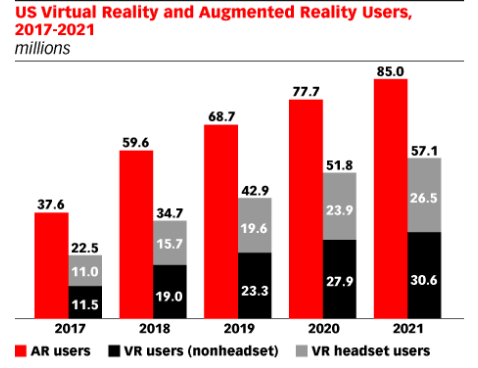Virtual reality is one of those technologies that has been hyped for several years. Especially with a host of low-cost VR devices such as the Google Cardboard and Samsung Gear headset, it’s already speculated that marketers will take advantage of this new messaging channel.
While most virtual reality applications would find a home in the consumer market, such as gaming or media consumption, there are individual companies in the B2B segment that have been using it to promote their products. Promotion of big-ticket items like office spaces, homes, and industrial equipment can now be executed using virtual reality by featuring them in a 3D environment.
B2B firms can create practical examples of how their products work for demonstration and training. In short, virtual campaigns would be particularly useful for B2B marketers. However, some firms are hesitant to embrace VR.
Reasons for Overlooking Virtual Reality in the B2B Environment
1. VR is complicated to integrate
Most of the B2B marketers assume that VR technology is impossible to learn or adopt. But they are wrong. Just because it’s novel to this segment doesn’t mean it’s not easy to integrate. Was social media or television only designed for hardcore nerds? Not at all! In the same way, VR is for every business type.
2. VR is not so affordable
For a long time, almost every marketer assumed VR to be costly. When Jaron Lanier launched the world’s first VR devices in the 1980s, they were estimated at thousands of US dollars. However, VR is becoming more and more affordable for today’s customers. Moreover, this tool offers a long-term return-on-investment with the right strategy, exceeding the initial cost.
3. VR is just an attention grabber
B2B marketers tend to follow traditional and formal approaches. In that note, VR comes as a flashy tool that provides less or no practical value in the business space. Notwithstanding, in the event that you think about the insights, it says the quantity of VR experiences in B2B will represent 40% of all experiences by 2022.
Will B2B Marketers Fear the Barricades?
No. On the contrary, the virtual reality market is expected to grow from to $44.7 billion by 2024, according to the new market research report by MarketsandMarkets. Another report by eMarketer highlights the rise in the number of VR users in the coming days.

With the increased popularity and the fact that it offers many opportunities for marketers, businesses have begun utilizing VR in their everyday marketing operations.
5 Ways to Use Virtual Reality in B2B Brands
VR experience is intrinsically exciting and interesting. However, to make it highly effective as a B2B marketing tool, follow five tried-and-tested strategies given below.
1. Product Demonstrators
B2B marketers can impress the prospects by building a product demo using VR technology. This demonstration will undoubtedly immerse the audience in your product and explain precisely how they use it. For example, Renault had let three business class passengers feel themselves in the future, test driving the car during their flight.
Later, these participants were allowed to relive the experience that had happened during the tour. According to Branding News, this attractive 360-degree VR campaign had “pushed the subtle difference between the virtual and real-world to an almost non-existent borderline.”
2. Virtual Stores
We all know that seeing any product online fails in comparison to buying them in the physical store. However, virtual reality can create a simulated environment that replicates the real feel of shopping in a brick and mortar store. Obsess is one of the popular virtual reality software platforms for experiential shopping. It enables brands to build interactive 360 virtual stores on their website.
3. Classrooms and Training
B2B buyers often research any product before investing in it. They rely on online manuals, videos, and FAQ lists to learn more about new purchases. With the help of VR devices, you can engage these prospective buyers in a virtual classroom or training environment. And here, they can learn everything about your product right from their home.
4. Content Marketing
B2B marketers can utilize VR technology to create dynamic content that connects well with the relevant buyer. Mainly, VR is useful as a visual storytelling tool, as it can pull the viewer into a fully immersive journey.
The New York Times’ first VR project, in collaboration with Google, focused on three children whose lives have been uprooted by war. As a journalistic powerhouse, readers of the NYT demand innovative and compelling storytelling. The brand’s in-house digital talent harnessed the power of VR to meet its user’s needs.
Their first batch of the story was delivered to print subscribers and has driven more than 600,000 film downloads so far.
5. Tradeshows and Events
Offering a virtual reality demonstration in the tradeshows and events will give your attendees the fun and engaging experience that they will remember long after the show. Key Technology, a producer of food handling frameworks, has composed a VR food packaging expo permitting participants to encounter a hands-on look at how the organization’s VERYX computerized food arranging platform works.
Conclusion
Like every other marketing technology revolution such as social media or content strategy, the firms that have established themselves at the earliest have gained massive earnings. Similarly, as virtual reality is surprising the marketing world by storm, only the cutting-edge B2B marketer will have a favorable position.
Guest PostAbout the Guest Author(s)

Emily Johnson
Emily Johnson is a marketing consultant with 10 years of experience in the execution of marketing strategies. Currently, she heads the marketing department at Blue Mail Media, a renowned B2B data solution company based out of Irving, Texas.




